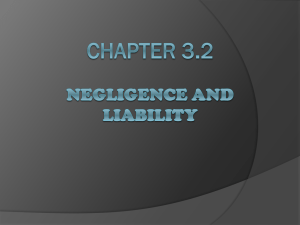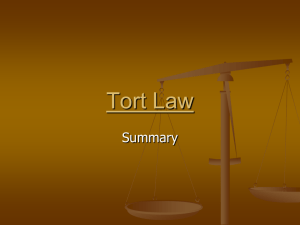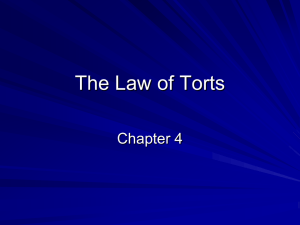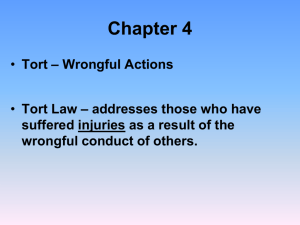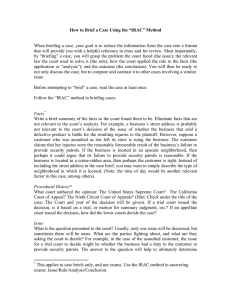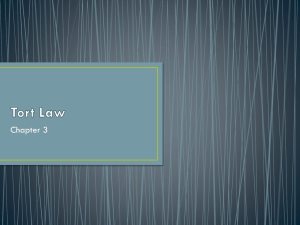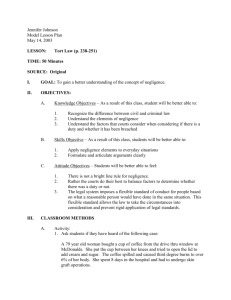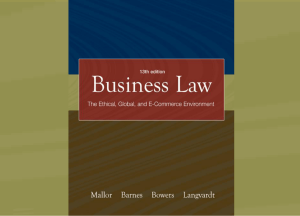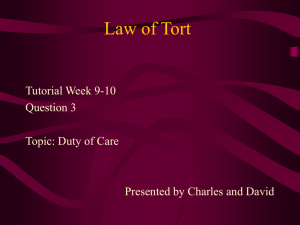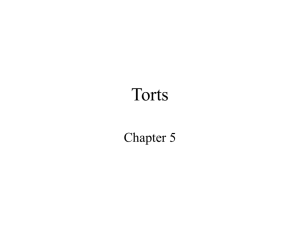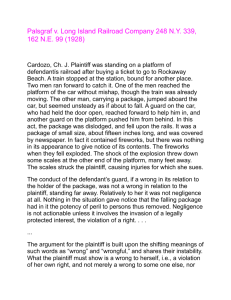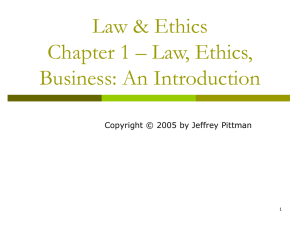Negligence
advertisement
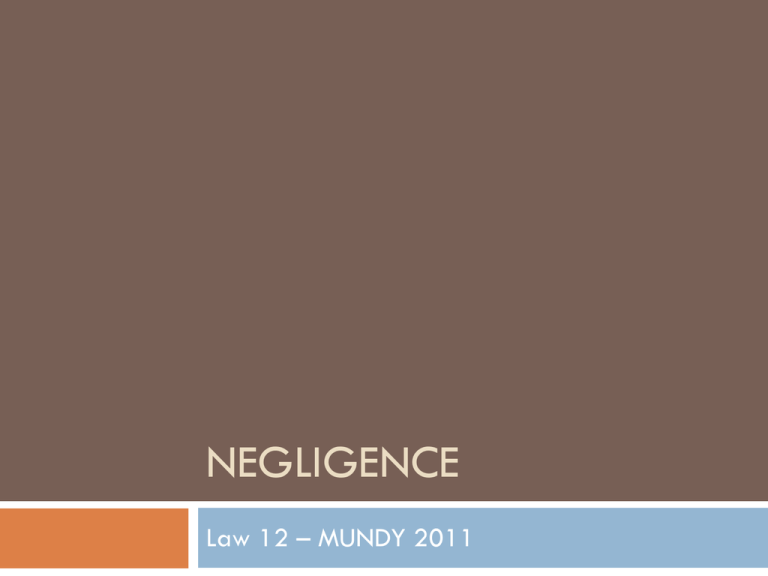
NEGLIGENCE Law 12 – MUNDY 2011 Negligence Tort law is based on mostly case precedents and certain provincial and federal legislation; Hence, our definitions of ‘wrongs’ & ‘negligence’ change over time with new examples in society Negligence Negligence is a major area of tort law It is defined as: unintentional action unplanned action injuries result In essence, negligence is carelessness that results in harm (injury or damage). Negligence vs. Intentional Torts Negligence differs from intentional torts in that the actions are not caused by someone deliberately wishing to cause harm Intentional torts, by contrast, are matters such as assault, false imprisonment, defamation, etc. Elements of Negligence Plaintiff is owed a duty of care Defendant breached duty of care Plaintiff suffered resulting harm or loss Duty of Care “Duty of care” is proved through legal obligations For example, if a mechanic neglects to tighten the bolts on a repair of a car, causing a subsequent accident or injury, the plaintiff (the driver) is owed a duty of care, and the defendant (the mechanic) has breached their duty of care Duty vs. Standard of Care A breach of duty of care can only be determined (through negligence) by examining the expected standard of care Standard of care is determined through the test of what a “reasonable person” would have done in similar circumstances Reasonable Person Determining a “reasonable person” depends on a number of factors: today’s standards for people (by society) professional standards (of conduct) local standards (varying by community) environmental factors at time Youths and Duty of Care youths and children cannot be judged by the same standards as adults Since no legislation exists on youths as “reasonable persons”, courts rely on case precedent younger the person, less expectation of “reasonable person” exists (hence, less liability in civil tort case) Foreseeability To determine a “reasonable person”, courts use test of foreseeability “Would a reasonable person is similar circumstances have foreseen the the injury as a result of their action?” Determines fault or liability (and to what degree) Causation If duty of care is demonstrated, as is defendant’s breach of care (through standard of care by reasonable person), then last area needing to be proven is causation In essence, there must be a causal connection between the plaintiff’s actions and the defendant’s harm (injury or damage) Causation Method of determining causation is through the familiar “but-for” test Meaning, the accident should not have occurred otherwise, but for the actions of the negligent plaintiff Actual Harm or Loss Once all the aforementioned has been proven, the last area to prove is actual harm or loss. If no significant injury or damages occurred, then there is no need for legal action Summary: Proof of Negligence 1. 2. 3. 4. 5. Does the defendant owe the plaintiff a duty of care? Did the defendant breach the standard of care? Did the defendant’s careless act cause the plaintiff’s injury or loss? Was there a direct connection between the defendant’s action and the plaintiff’s injury or loss? Was what happened foreseeable? Did the plaintiff suffer actual harm or loss?







